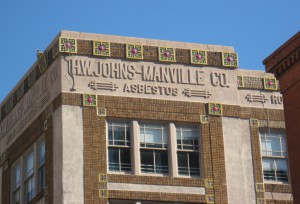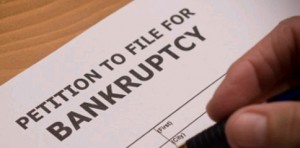By admin on January 9, 2016
A recent California decision has held for the first time that a contractor may be, in at least some circumstances, subject to strict liability for products used on the project. This ruling will likely expand the pool of defendants in future asbestos cases, and will apply outside the asbestos arena as well.
Traditionally, construction contractors who use or install a product are not subject to strict product liability if it turns out the product is defective. Contractors may be liable in negligence, but that is harder for plaintiffs to prove and subject to defenses unavailable in strict liability claims.
Hernandezcueva v. E.F. Brady Co. (B251933) reversed a nonsuit and held that E.F. Brady, a drywall and plastering contractor, could be subject to strict products liability despite its status as a contractor rather than a manufacturer or distributor of any product.
 Defendant E.F. Brady worked as the drywall subcontractor on a large construction project in the early 1970s. E.F. Brady’s bid for the contract included both labor and materials, and evidence was presented that E.F. Brady used asbestos-containing drywall joint compounds on the jobsite. The plaintiff testified that he cleaned up dusty drywall debris created by E.F. Brady employees. The trial court granted a nonsuit on the strict liability cause of action but allowed the negligence cause of action and request for punitive damages to go to the jury, which found for the defense.
Defendant E.F. Brady worked as the drywall subcontractor on a large construction project in the early 1970s. E.F. Brady’s bid for the contract included both labor and materials, and evidence was presented that E.F. Brady used asbestos-containing drywall joint compounds on the jobsite. The plaintiff testified that he cleaned up dusty drywall debris created by E.F. Brady employees. The trial court granted a nonsuit on the strict liability cause of action but allowed the negligence cause of action and request for punitive damages to go to the jury, which found for the defense.
The Court of Appeal reversed the nonsuit, holding that the jury should have been allowed to determine whether E.F. Brady’s supply of the allegedly defective asbestos-containing joint compound which the plaintiff encountered caused his injury. This is distinguished from whether E.F. Brady’s conduct as a contractor caused the plaintiff’s injury, which is normally how contractors are implicated in asbestos lawsuits—for example, by allegedly failing to take precautions to protect others from asbestos exposure. The court held that under the facts of the case, E.F. Brady was not “just a contractor.” Rather, E.F. Brady played a “significant” role in the stream of commerce of the asbestos-containing joint compound, because E.F. Brady:
- “Always” provided materials as part of its drywall contract;
- Structured its time-and-materials contract to recoup the costs of materials (even “without necessarily ensuring a profit regarding those costs,” in part because the costs were “substantial, as they ordinarily constituted 25 percent of the amount of a bid”);
- Had a relationship with manufacturers of asbestos-containing drywall products “sufficient to command the personal attention of [their] representatives to E.F. Brady’s concerns regarding the products” that placed it “‘in a position to exert pressure on the manufacturer’ to improve product safety;” and
- Was a large commercial operation and so was “capable of bearing the costs of compensating for injuries due to the products.”
Notably, the evidence for relationship with manufacturers was only that manufacturer reps came on site and advised as to the suitability of their products for the applications involved. There was no evidence related to conversations about changing any product formulation.
Contractors providing services have always been considered outside the stream of commerce of products supplied incidentally to services. The “primary objective or essence of the transaction” between a customer and a contractor is the provision of services, not obtaining a product, and California courts have long recognized that this fact places contractors outside the stream of commerce of products they provide under their contracts. (E.g., Monte Vista Development Corp. v. Superior Court (1991) 226 Cal.App.3d 1681 [tiling subcontractor not strictly liable for defective soap dish]; Pierson v. Sharp Memorial Hospital, Inc. (1989) 216 Cal.App.3d 340[hospital not strictly liable for defective carpet in patient room]; Silverhart v. Mount Zion Hospital (1971) 20 Cal.App.3d 1022 [hospital not strictly liable for defective surgical needle used during operation].) But under this decision, if the acquisition of a product was a “significant” aspect of the transaction, a contractor could fall into the realm of strict liability.
Take the hospital example. In Silverhart v. Mount Zion Hospital, the Court of Appeal held that a hospital was not strictly liable for an allegedly defective surgical needle used during the course of an operation performed on the plaintiff patient. In that case, the needle was “necessary” to the operation, but was still a “tool” rather than a “material.” But what if the patient wanted a pacemaker implanted? Under Hernandezcueva, perhaps the hospital could be strictly liable—a potential sea change in medical device liability law. A hospital probably “always” provides the pacemaker as part of the contract to install a pacemaker; it probably recoups the cost of the pacemaker in the contract to perform the surgery, but probably doesn’t try to make a profit; and the pacemaker manufacturer’s representatives probably visit the hospital all the time. All the requisite facts are there to impose strict liability on the hospital under Hernandezcueva—but it directly conflicts with Hector v. Cedars-Sinai Medical Center (1986) 180 Cal.App.3d 493, which held that a hospital could not be held strictly liable for defects in an implanted pacemaker.
Hernandezcueva brings within its reasoning virtually all businesses which provide products along with or “incidental to” the services they provide to customers. The court found that because E.F. Brady “derived a considerable benefit from supplying the products, as that was essential to obtaining its subcontracting work,” it was liable as a supplier of products. Every handyman who brings his own materials to a customer’s home is potentially a “seller” of those materials under this decision, as is the multinational general contractor who supplies any materials whatsoever for a subcontractor’s use, and everyone in between—as long as there is an allegation that it was “essential” to the business transaction that the materials in question be provided.
An additional possible effect of the Hernandezcueva decision is that contractors and other “non-traditional” defendants may now be considered part of the “chain of distribution” of the materials they provide incidental to their services. This means that the “single product rule” prevents these defendants from arguing that liability should be assigned elsewhere in the chain. A manufacturer, distributor, and retailer of a “single product” may not attempt to assign fault to one another under California law. If a contractor, and indeed any type of defendant who supplies an allegedly defective product along with a service, is now within the chain of distribution of those products, the several liability rule of California’s Proposition 51 will not apply and they will all be jointly and severally liable for damages stemming from the use of the product.
In a discussion of a tangential point, the Hernandezcueva court also held that payments to a plaintiff from asbestos bankruptcy trusts fall “under the collateral source rule, which bars a defendant from shielding itself from liability for injuries by identifying a source of compensation that is wholly independent of the defendant.” There are at least two potential negative effects of holding that asbestos bankruptcy trusts are “collateral sources,” like health or life insurance. One, that defendants are not entitled to offset any damages by showing payments to a plaintiff by an asbestos bankruptcy trust. Two, that bankrupt entities should no longer be placed on the verdict form for apportionment of responsibility. This is a potentially very negative ruling, because plaintiffs can often receive hundreds of thousands of dollars from bankruptcy trusts which offset eventual judgments against defendants, and defendants are presently able to shift responsibility to bankrupt entities in appropriate cases. The holding is not necessary to the decision, was on a point raised by none of the parties (but rather in response to a collateral argument made in an amicus brief), and is dicta, but it should concern all asbestos defendants nonetheless. Full disclosure: Gordon & Rees’s Don Willenburg co-authored an amicus letter brief asking the court to eliminate or modify this portion of the decision.
Because the Hernandezcueva decision appears to be in direct conflict with longstanding California law regarding both strict product liability of contractors and asbestos bankruptcy trust payments as collateral sources, depublication or California Supreme Court review are possible prospects. If the decision stands, it will significantly expand the universe of strict liability defendants, in both asbestos and non-asbestos cases, and could seriously damage asbestos defendants’ ability to reduce future judgments.
 As we recently reported, the original version of the opinion held that asbestos bankruptcy trusts were “collateral sources,” meaning that the often substantial recoveries plaintiffs obtain from such trusts could not offset judgments against defendants. The order modifying the opinion deletes the reference to the collateral source rule entirely. It also refers to asbestos bankruptcy trusts as “joint tortfeasors” for purposes of offsetting judgments, and cites several cases holding that recoveries from asbestos bankruptcy trusts are explicitly approved as offsetting a judgment. Equally importantly, the reference to the trusts as “joint tortfeasors” confirms and continues asbestos defendants’ ability to ask juries to assign shares of liability to bankrupt manufacturers.
As we recently reported, the original version of the opinion held that asbestos bankruptcy trusts were “collateral sources,” meaning that the often substantial recoveries plaintiffs obtain from such trusts could not offset judgments against defendants. The order modifying the opinion deletes the reference to the collateral source rule entirely. It also refers to asbestos bankruptcy trusts as “joint tortfeasors” for purposes of offsetting judgments, and cites several cases holding that recoveries from asbestos bankruptcy trusts are explicitly approved as offsetting a judgment. Equally importantly, the reference to the trusts as “joint tortfeasors” confirms and continues asbestos defendants’ ability to ask juries to assign shares of liability to bankrupt manufacturers.
 Defendant E.F. Brady worked as the drywall subcontractor on a large construction project in the early 1970s. E.F. Brady’s bid for the contract included both labor and materials, and evidence was presented that E.F. Brady used asbestos-containing drywall joint compounds on the jobsite. The plaintiff testified that he cleaned up dusty drywall debris created by E.F. Brady employees. The trial court granted a nonsuit on the strict liability cause of action but allowed the negligence cause of action and request for punitive damages to go to the jury, which found for the defense.
Defendant E.F. Brady worked as the drywall subcontractor on a large construction project in the early 1970s. E.F. Brady’s bid for the contract included both labor and materials, and evidence was presented that E.F. Brady used asbestos-containing drywall joint compounds on the jobsite. The plaintiff testified that he cleaned up dusty drywall debris created by E.F. Brady employees. The trial court granted a nonsuit on the strict liability cause of action but allowed the negligence cause of action and request for punitive damages to go to the jury, which found for the defense.